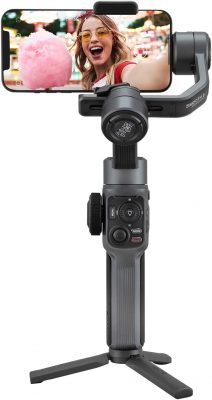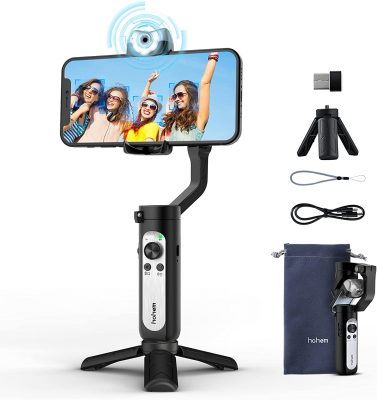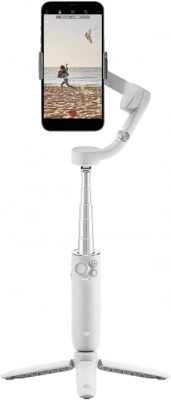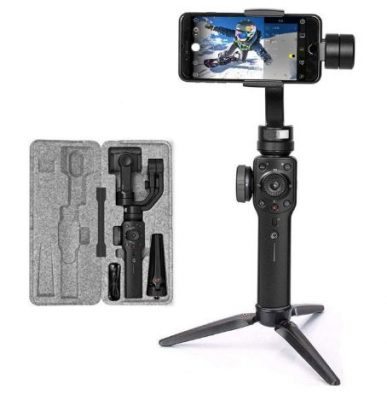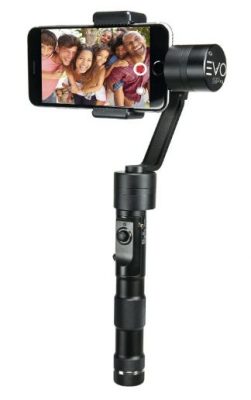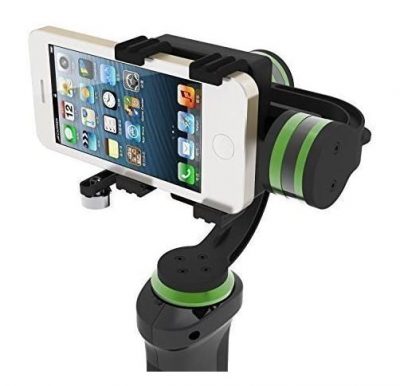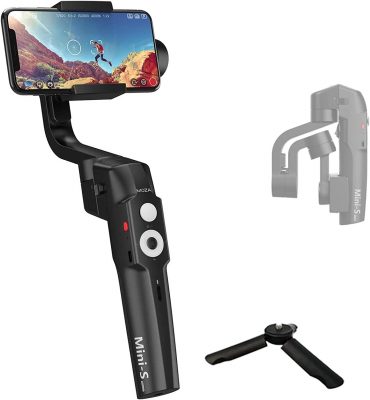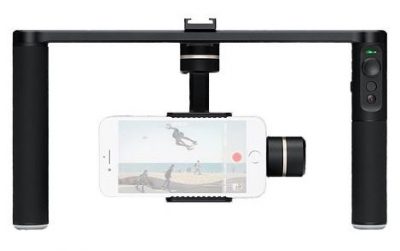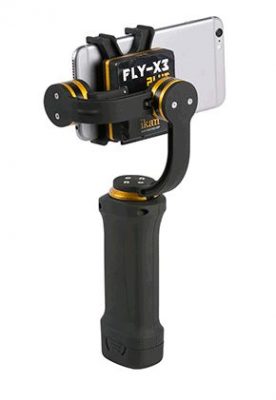Time and time again, iPhone surprises us with its nifty camera features. As the brand that started the mobile action photography craze, iPhone is no doubt the favored companion in capturing precious moments in our lives. Regardless of the model, the iPhone never disappoints in terms of the camera. It is more than capable of taking professional-grade photos and videos — until your hands shake and tremble. Even the best camera phones wouldn’t be able to help a blurry photo taken by a shaky hand. Thankfully, you can use a gimbal for your iPhone to maximize the best in your iPhone camera.
In this article, we cherry-picked the best gimbal stabilizers for iPhones so you wouldn’t worry anymore about blurry photos or shaky videos. We’ll also be providing tips to consider when choosing an iPhone gimbal for better value.
Inside This Article
- What Is a Gimbal Stabilizer?
- The Best Gimbal for iPhone
- Things to Consider When Choosing Gimbal for iPhone
What Is a Gimbal Stabilizer?
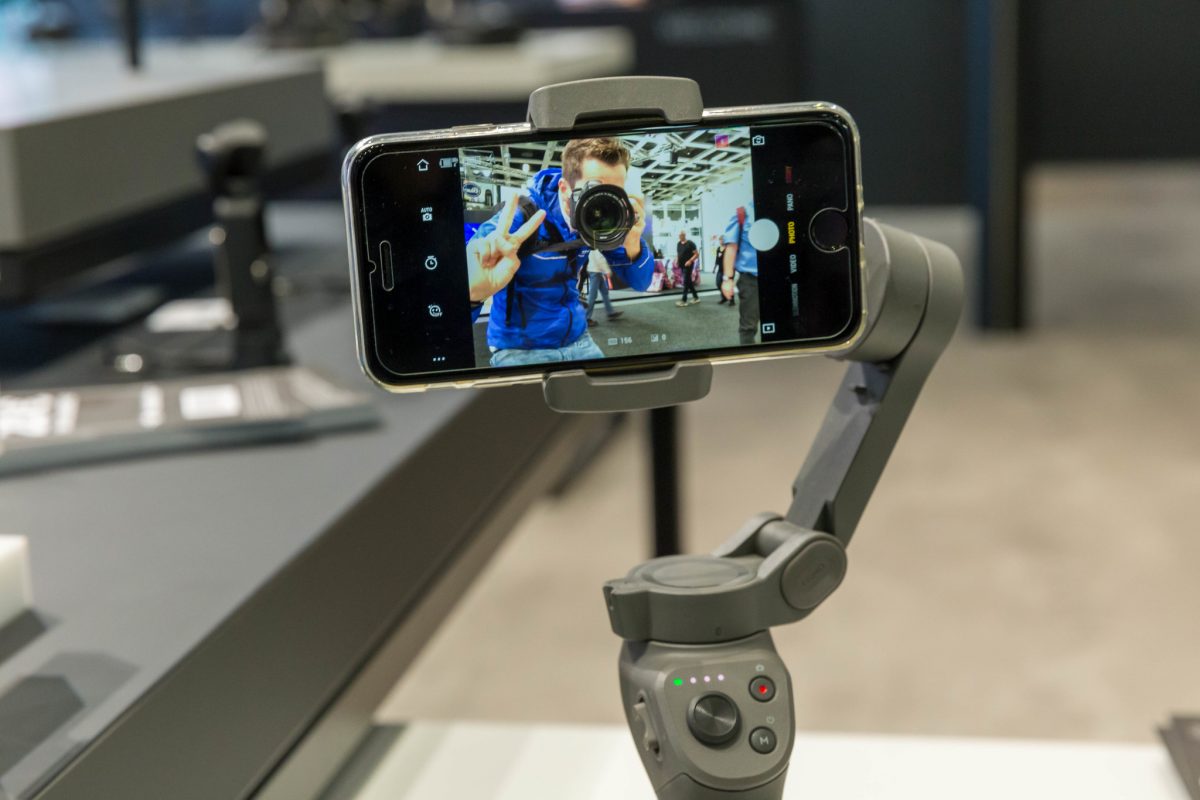
In a technical definition, a gimbal is a pivoted support that is allowing any object to rotate on a single axis. But from a videographer’s point of view, a gimbal is a camera mount that lets you shoot videos smoothly. This tool uses a three-motorized gimbal so you can keep your camera steady and avoid unwanted movements. Some types have certain algorithms and gyroscopes. It can easily differentiate deliberate movements and unwanted jolts. Gimbals keep cameras, mobile devices, or any video equipment perfectly balanced in different shooting situations.
Gimbals serve all kinds of practical and industrial purposes. Although most commonly known and used for videography, there is more to gimbals. They can be used in ships as these keep stoves and cup holders level with the horizon. A handheld single-axis gimbal is helpful when there are heavy lenses attached to a camera. The most common example of this use is in wildlife photography. But a gimbal is even more indispensable when you shoot a video. Some gimbals can also be used as a cell phone tripod or a selfie stick.
The Best Gimbal for iPhone
Here are the best iPhone gimbals that might fit your needs.
DJI OM 4
| Type: 3-Axis Phone Gimbal | Weight: 430 grams |
| Battery: Approx. 15 hours |
Just because there is a new DJI Osmo Mobile gimbal doesn’t mean DJI OM 4 has seen its better days. It remains one of the best gimbals for iPhones out there.
This iPhone gimbal stabilizer features a sleek and foldable design that you can take anywhere. It weighs about 430 grams, which makes it light, portable, and convenient to carry around. The three-axis gimbal feature eliminates and reduces shaky footage. Instead, it delivers a stabilized and smooth image. Moreover, it has an ergonomic grip and dynamic design. With an integrated battery, the stabilizer can run up to 15 hours, assuming it is partnered with a properly balanced phone.
DJI Osmo Mobile also uses the Mimo app that connects two devices automatically. Although there is still a lot of space for improvement, this gimbal already stands out for its advanced features. Besides all these, the DJI Mobile 4 also offers one-tap templates. These can transform footage into a more polished result.
Pros
- Lightweight and easy to carry around
- Excellent gesture control and hands-free functionality
- Superb dynamic zoom capability
- Dependable battery
Cons
- Lack of ISO/shutter control on Android
| Type: 3-Axis Phone Gimbal | Weight: 290 grams |
| Battery: Approx. 6 hours |
DJI OM 5 is the fifth and the latest iteration of DJI’s popular phone gimbal for iPhone and other mobile devices. Designed for unskilled users, it carries the same snap-into-place design seen in the previous DJI OM that let you magnetically secure your smartphone onto the gimbal without the need for balancing or calibration.
One of the biggest highlights of this upgrade is the built-in extension rod that would allow you to take wider shots or include more friends in a selfie. When connected to the DJI Mimo app, it can even recognize your environment to give you shot recommendations — a new feature they call ShotGuides. They paired this with a better ActiveTrack, an algorithm that tracks objects to ensure stable and smooth videos of your subject.
Despite the powerful specs, DJI was able to pack all this technology in a lightweight device. That said, there is a letdown. Along the process of making the possibly most lightweight iPhone gimbal stabilizer, battery life was sacrificed. Compared to DJI OM 4, which can last for good 15 hours, DJI OM 5 runs behind six hours of performance.
DJI OM 5 works well with iPhones 11 and 12. When using this gimbal with heavier phones like iPhone 13, remove your phone accessories to avoid getting vibration because of added weight.
Pros
- Lightweight
- Wider shots and better angles thanks to the built-in extension rod
- Better object tracking
- Smart and Premium
Cons
- Downgraded battery capacity
- Fiddly
| Type: 3-Axis Phone Gimbal | Weight: 615 grams |
| Battery: Up to 25 hours |
Zhiyun Smooth 4 is a favorite gimbal for iPhone and still is. However, we can’t overlook the major upgrades its latest iteration has to offer.
The Zhiyun Smooth 5 enhances stability with its Orthogonal Design and 3-axis range. In layman’s terms, this gimbal provides your iPhone with the perfect angles to take amazingly smooth footage even in extreme positions. Its adjustable roll axis arm is also longer to make room for different camera lenses such as telephoto, fisheye, and wide angle.
What we like about the Zhiyun Smooth 5 is the well-laid-out control panel that allows you to quickly make adjustments while shooting. Specifically, we like the new control wheel for tweaking focus and focal length on the fly. It may seem to require a lot of practice, but it’s worth it when you get the hang of it.
Pros
- Intuitive control panel
- Several controls and adjustment options
- Up to 25 hours of battery under normal use
Cons
- Buggy companion app (ZY Cami)
- Not exactly lightweight
- Stiff learning curve
| Type: 3-Axis Phone Gimbal | Weight: 290 grams |
| Battery: Approx. 6 hours |
The Zhiyun Smooth 4 turns your iPhone into a professional filmmaking camera. Using just your iPhone, this gimbal allows you to create smooth and stable footage. Its all-black design consists of an integrated control panel that helps users to control and adjust the stabilizer. It also reduces the need to touch the screen and control the camera with functional buttons.
Zhiyun Smooth 4 was made fit for the iPhone with its exceptional features. It has a built-in handwheel to focus on pull and zoom capability. The PhoneGo mode scene transition allows the users to respond to any delicate movement. Also, the Time Lapse feature supports all shooting techniques. With Object Tracking, you can track not just faces but also objects with high precision. Lastly, this gimbal stabilizer has two-way charging with longer runtime. It has a battery indicator and can run for 12 hours in a row.
Pros
- Universal compatibility with other phones
- Supports several time-lapse motions
- Focus pull and zoom capability
- On-point object tracking feature
Cons
- Compatible but poorly optimized for Android
- The flat shape surface makes it less ergonomic
- Heavy and not easy to carry
| Type: 3-Axis Phone Gimbal | Weight: 236 grams |
| Battery: Approx. 9 hours |
Hohem iSteady V2 comes with a brushless motor and anti-shake algorithm system for buttery smooth cinematic shots. It is paired with AI tracking sensors to focus on the subject and gesture controls to let you switch between different orientations with just a flick of a finger. Say you want to switch from portrait to landscape while on a live stream, you can simply show a gesture to its AI lens and it will automatically do so.
As an added plus, it has a built-in LED light to meet your brightness needs when shooting in a low-light setting. However, this will use the nine-hour battery capacity of Hohem iSteady V2, which also doubles as a battery pack for your phone. The battery life is not exactly underwhelming. However, given that it can share power, it could have been equipped with better power that can last longer.
Pros
-
Reverse charging
- Built-in LED lights
- Lightweight and portable
Cons
-
Battery can be improved
| Type: 3-Axis Phone Gimbal | Weight: 440g grams |
| Battery: Approx. 14 hours |
With the EVO SP 3-Axis Gimbal, you can shoot smooth, professional-quality, and stabilized photos and videos. It has features that guarantee incredible stabilization accuracy and performance for iPhone. Its 3-Axis Precision prevents shakey videos and lets you shoot cinematic-quality footage. You can easily set up and use EVO SP features like high-power motors that deliver an unparalleled level of stabilization performance and smooth shots.
Another feature that makes the EVO SP remarkable is the four different dynamic shooting modes. The modes are the Heading Follow Mode, Heading Lock Mode, Heading Pitch Mode, and Inverted Mode. When you purchase EVO SP, it comes with a labor warranty, a charger, a charging cable, and two li-ion batteries.
Pros
- Advanced on-handle controls
- Offers excellent stabilization
- Powerful with up to 14 hours of run-time
- One-year warranty
Cons
- Limited tilt range
- Does not work well with other added accessories
| Type: 3-Axis Phone Gimbal | Weight: 907 grams |
| Battery: Approx. 2 hours |
This handheld iPhone gimbal stabilizer allows you to capture free-floating and stabilized shots on your device. It has a motorized three-axis gimbal and a six-axis IMU feature, which are designed to balance your device’s level and keep it from jitters and shakes. It also follows the tilt and pan motion of your wrist and keeps a horizon level. In one look, you will see a clamp where you will connect your smartphone. The tight clamp secures the device from falling if you are shooting an action-packed scene. There are variations of clamps available depending on what you need them for.
LanParte HHG-01 is very easy to use. Its firmware has already been added and you can proceed with capturing videos. It has a Silica gel handle that makes it stable to hold.
Pros
- Easy to set up
- Includes optional mounting clamp for GoPros
- Excellent gesture control system
Cons
- Disturbing noise coming from the motor
- Underwhelming battery
- Manual not in native English
| Type: 3-Axis Phone Gimbal | Weight: 420 grams |
| Battery: Approx. 5 hours |
If you either want a traditional design iPhone gimbal or something wearable, the Gudsen Moza mini got it for you. It is easily compatible with other types of mounting equipment such as cranes and tripods. The flexibility does not end with this because it also offers different modes. There are zoom control, focus control, sports gear, and inception mode. For the zoom, there is a one-button zoom located on the handgrip of the gimbal. This works even without touching your smartphone. For the focus control, you can dynamically control the focus on your phone using the MOZA Genie app. The sports gear mode can release flash motors to achieve an amazing scene transition. Lastly, the inception mode allows the users to take amazing dutch tilt shots.
Pros
- Compatible with other types of mounting equipment
- Object tracking feature
- Several advanced shooting modes
Cons
- Battery can be improved
- Stabilizer difficult to adjust to a horizontal position
| Type: 3-Axis Phone Gimbal | Weight: 400 grams |
| Battery: Approx. 8 hours |
The Feiyu Tech SPG Plus is an iPhone gimbal that aims to bring ultra-stability with its dual handle system. Unlike the other previous one-handed gimbal stabilizers, this model is structured to be held by two hands. This way, the impact of possible shakes on your body is minimized.
This gimbal also sports rich expandability. FeiYu Tech has 5 ¼-inch ports that are compatible with various accessories. May it be a tripod, flash, or microphone, it fits well with the gimbal. Also, there is a face-tracking feature that follows the movement of the face and guides the motions of the gimbal. Its auto-focus and dynamic panorama add an extra creative touch to every shot.
Pros
-
Vertical mode for streamers
- Unique dual handle for doubled stability
- Extensive accessories
Cons
- Difficulty connecting with Bluetooth devices
- Difficult to set up using other phones
Ikan FLY-X3
| Type: 3-Axis Phone Gimbal | Weight: 1.1 kg |
| Battery: 2-3 hours |
Specifically made for smartphones and GoPros, the FLY-X3 transforms devices into powerful image-capture tools. This allows users to eliminate shaky movement and shoot fluid professional videos as if the object is floating. It features a unique three-axis brushless gyro motor system that uses sophisticated software to stabilize your device and make tilts or pans.
Its battery can last from three to four hours of use, which is not that impressive. For a whole day of shooting, we suggest that you bring an extra or two batteries as a backup. Although it’s not as powerful as its competitors in the higher price range, FLY-X3 can still be considered a good catch. It offers average stability, which you can easily remove from its grip.
Pros
- Extra batteries provided
- Includes useful accessories upon purchase
- Easy to use and set up
Cons
- Produces disturbing noise when the phone is not balanced properly
- Battery capacity can be improved
Things to Consider When Choosing Gimbal for iPhone
More than just keeping your camera steady, a gimbal for iPhone can do more. There are many built-in features that can elevate your game. Some of these include utility software and Bluetooth capabilities that let you connect to your device easily. Here are other things to take into consideration before buying yourself an iPhone gimbal:
1. Axis Stabilization
Not all gimbals are created equal as they come in two types: the two-axis and three-axis gimbals. The two-axis gimbals are focused on stabilizing the Tilt & Roll axis. On the other hand, a three-axis gimbal adds stabilization to the Pan axis. Upon comparison, the three-axis gimbal adds smoothness and creates a different shot style.
2. Batteries
Battery-powered gimbals come in two different types. It can either be standard alkaline or rechargeable lithium-ion batteries. The alkaline batteries need replacement at regular intervals. On the other hand, rechargeable lithium-ion batteries tend to have shorter running times.
3. Weight
Weight is an important factor when choosing the right iPhone gimbal. If you are going to shoot for a few minutes, it will normally affect your wrist’s activity. Although gimbals do not weigh more than a couple of pounds, two or three pounds can already get heavy.
4. Software
Most gimbals are installed with utility software. This is a powerful tool that enables you to get the best out of your gimbal and device. Moreover, it often works with a particular operating system. Make sure that your gimbal is compatible with your PC or if it comes with a mobile app. Through this, it will be easier for you to control your gimbal and easily adjust advanced shooting functions.
5. Compatibility and Versatility
It is equally important to purchase a gimbal that is compatible with your camera or mobile device. If it does not work with the operating system, there is a tendency that it will not work well. Keep in mind that most gimbals only work with specific phone models. To avoid this, make sure to take a good read of the gimbal product page.
Conclusion
Gimbals have proven their purpose for different situations. You can use a gimbal on your camera, GoPro, or your mobile device. Whichever you need it for, it certainly helps you produce a quality photo or video. You do not need to worry about blurry or shaky footage anymore. Remember to know the features and factors of the gimbal you are going to purchase, from the stabilization, reliability, compatibility, and versatility.


